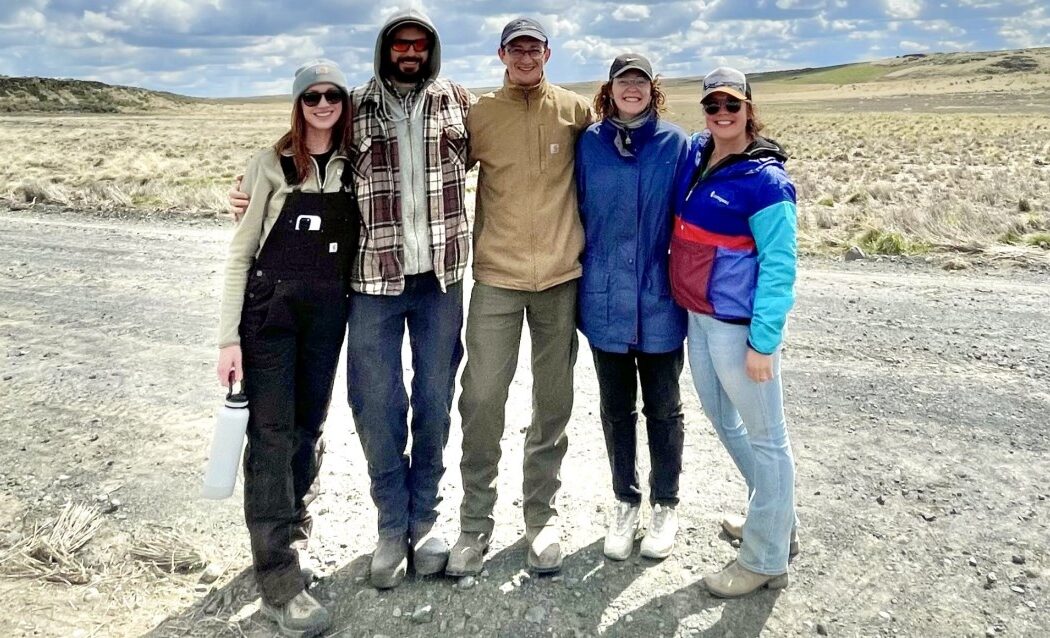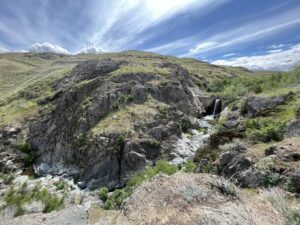In the state of Washington, Douglas County shares the sunny skies, rolling hills, and vast acres of farmland that define much of Central Washington.
Home to many locals with longstanding connections to the land, the county stands out as a bright example of environmental stewardship developed hand-in-hand with its community.
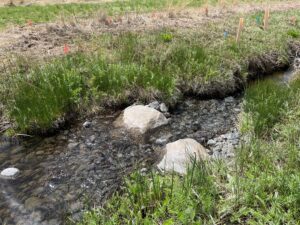 “People’s relationship to the landscape is strong here — for the Colville Tribe, for generations of farmers, and for communities living throughout this county,” said Becca Hebron, district manager for the Foster Creek Conservation District (FCCD).
“People’s relationship to the landscape is strong here — for the Colville Tribe, for generations of farmers, and for communities living throughout this county,” said Becca Hebron, district manager for the Foster Creek Conservation District (FCCD).
Restoration efforts in Foster Creek have been underway since 2015, beginning in the creek’s western headwaters as a collaboration with the Colville Tribe and the Washington Department of Ecology.
FCCD is bolstering their work with a new round of grant funding from Ecology.
Scheduled for completion by 2025, the new projects help build toward FCCD’s goals to restore the watershed, monitor water quality, and improve soil health.
Let’s take a tour of FCCD’s hard work.
Their progress helps ensure future generations can enjoy all the abundant beauty and natural resources Douglas County has to offer.
Starting from the ground up: promoting healthy soil
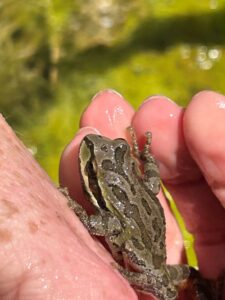 Since 2016, FCCD has partnered with Ecology to transition over 750 acres of farmland from conventional tilling to direct seed.
Since 2016, FCCD has partnered with Ecology to transition over 750 acres of farmland from conventional tilling to direct seed.
Regenerative agricultural practices are critical for thriving farms, clean water, and robust ecosystems in the face of a warming climate.
Compared to conventionally tilled lands, these practices cultivate richer, healthier soil. That soil can trap more carbon, retain more water during droughts, and grow more food.
Healthy soils also prevent erosion, a top concern FCCD is addressing through its grant projects. Air quality suffers when dust from erosion rises into the air.
Sediments can enter streams and prevent aquatic ecosystems from getting enough dissolved oxygen.
Literally and figuratively, FCCD is getting to the root of the problem. Healthy soils mean resilient ecosystems that can support all living things that call Douglas County home.
Sink or swim: Is lower Foster Creek safe for salmon?
There is no fish passage beyond Chief Joseph, the state’s second largest dam on the Columbia River.
Just below lies Foster Creek, the final upstream tributary on the Columbia River. Its first mile remains accessible to fish before it too is blocked by man-made and natural barriers.
With support from Ecology, FCCD plans to expand existing water quality and streamflow monitoring here to keep an eye on flow, temperature, pH, and dissolved oxygen.
These data will inform what steps are needed to create a hospitable environment for salmon and steelhead exiting the Columbia.
The conservation district seeks ways to deliver cool water downstream to this important reach of Foster Creek.
In April, FCCD led Salmon in the Classroom, a program where local children helped release 250 salmon into Foster Creek.
FCCD has our appreciation for their “dam” good work to improve fish habitat!
Ripple effect: ponds, wetlands, and creek restoration
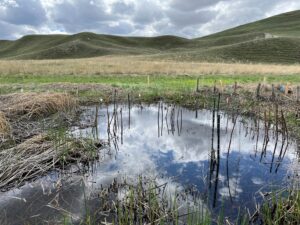 At the Mary Jane Hill project site, FCCD worked with Ecology’s Washington Conservation Corps to construct a new pond.
At the Mary Jane Hill project site, FCCD worked with Ecology’s Washington Conservation Corps to construct a new pond.
By keeping more water on the landscape, the pond supports shrubs that will grow to provide shade, trap sediments, slow down the flow of water, and raise the creek channel.
Water running through the pond will be cleaner and better able to support life downstream. And, by expanding the wetlands, this pond will help sequester more carbon!
Further downstream is the Chalk Hills project site. The area is named for the distinctive mounds of white, chalky soil. Fun fact: they’re salty! If you’re lucky, you might catch deer licking the hills.
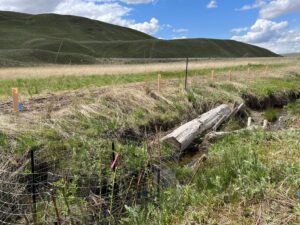 Between Mary Jane Hill and Chalk Hills, FCCD planted a whopping 1,519 trees and shrubs.
Between Mary Jane Hill and Chalk Hills, FCCD planted a whopping 1,519 trees and shrubs.
Dogwoods and willows make up majority of the trees planted. Already common in the area, willow will penetrate brush in this habitat. By growing to provide shade, new willows will also make room for other species to grow.
At both project sites, FCCD built several structures designed to help restore the creek by filtering sediments and controlling the flow of water.
They’re each constructed out of natural materials available nearby. FCCD placed these structures in 2021 after the Pearl Hill Fire burned the entire area the previous year.
From creek to farm: making waves and sowing success
FCCD has achieved outstanding progress on their grant projects in just a short amount of time.
And that’s on top of their ongoing and upcoming work in restoration, outreach, and water quality monitoring.
FCCD’s staff has our appreciation for all they’ve done to care for Douglas County’s waters and wetlands, promote sustainable ways to grow food, and show what’s possible through their “watershed” accomplishments in ecological stewardship.
All photos courtesy of FCCD. Featured photo shows FCCD staff. From left to right: Maggie, Nate, Ryan, Michelle, Becca.

